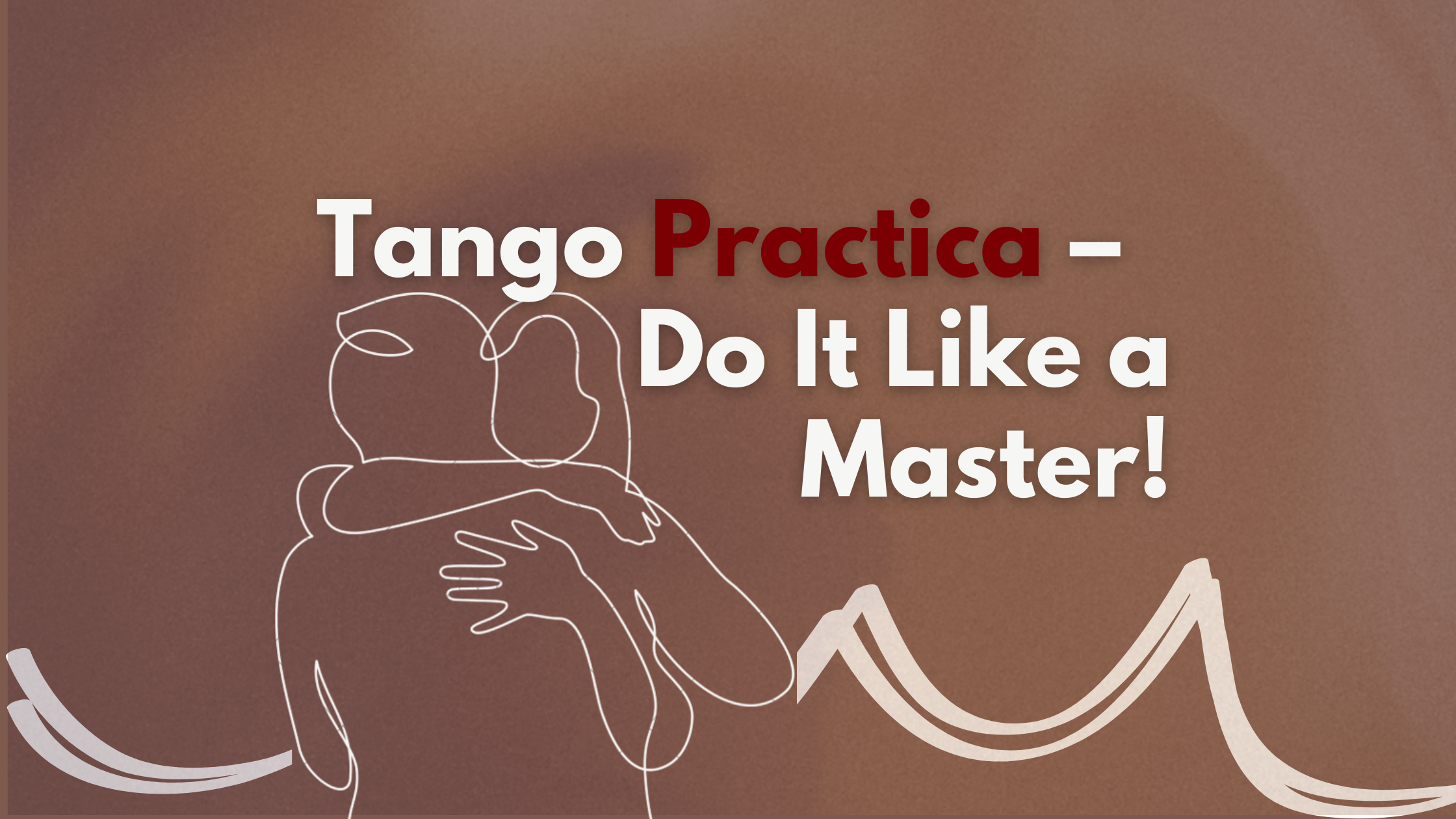
Tango Practica – 9 Tips To Do It Like A Master!
So you have just made an appointment for a weekly Tango Practica with your partner, and you would like to make the most out of it? Great! That’s already a great attitude. But might not be enough to reach constant growth in tango. Probably it’s not enough for many other dance or sports disciplines or projects (like learning the new language).
Progress loves structure, and, IMHO needs it too. Let’s name a few points which can help you during tango Practice:
1. Set goals.
Take some time before the practice to figure out what of your skills would you like to improve. No idea what to choose? You can describe qualities that you admire in your favourite dancers and try to embody them, they can be even a bit abstract. Let’s name a few: being pleasant, the fluidity of the lead, shock absorption in contact with the floor, the immediate answer for the lead (no delay)- for followers, linear vs circular dancing. You could also pick some technical aspects of the dance, like stability, symmetry of the embrace and the impulse, consistency of the embrace, pushing the floor when stepping in all three directions. See? So many aspects, all of them will help us improve our comfort, communication technique or creativity. All you have to do is to make a decision and be consequent. The results will come!
2. Name checkpoints.
You know your ‘what’, now don’t get scared with the ‘how’. You probably know, at least in theory, how to get there. Divide the big goal into smaller checkpoints. Use the logic to imagine the movement. It has to be comfortable for both roles at the end.
3. Create a routine.
During one webinar with Lorena Tarantino and Gianpiero Galdi about tango best practices I asked them how to practice. They suggested to start with a few song of a warm up to clear a little bit the mind and make the body talk. After that spend some time on dancing a so called routine: a repeatable combination of movements that challenges both dancers enough to stay focused but is also easy to loop and switch off the brain and turn off the question -what to do next? Ganpiero said, that when they practice with Lorena they dance five to seven of those routines, until the first sign of sweat appears.
4. Be prepared before you enter the practice room.
One thing is to set the big goal. The other is to know what you will practice that day. Here are some ideas how to decide:
- Use the video that you took on the last workshops with the teachers. Don’t let it just stay on the camera roll and consume the memory of your phone.
- Choose a sequence from a video of the tango performance of a couple you like. Try to reproduce what they danced. You can recreate a bigger piece and dance it as a choreography.
- Create a piece of choreography of your own. This is a great creativity challenge. And also gives the follower a chance to influence the steps you will dance.
- Followers and advice for you: do the homework too and come to practice prepared with you own ideas. Don’t leave it entirely on the leader!
5. Communicate.
That’s an important one. Ask your partner for feedback. And give it to your partner. Be honest and precise but be kind. And (that’s a golden communication rule) use ‘I-statements‘. In other words, speak for yourself. Instead of telling:
“You’re pushing me out of my axis!”
you can say:
“After my pivot, I feel a push to my left side. Could we check that moment slowly?”.
Keep calm and name the sensations you are struggling with instead of blaming your partner for it. It might be still his/her mistake, but the way you will communicate will invite you to find a solution and not fight.
6. Ask someone for a feedback.
When more complex problems occur, ask for help from a mediator. Ask a teacher or another dancer on the practica to see it first and then to try with both of you. Obstacles have the tendency to lie elsewhere than we look for. By the way teaming up with another couple can be also very inspiring! Try to exchange the ideas, or challenges, it might happen to be not only very productive but also fun!
7. Record your dance.
Seeing yourself on the video will give you probably a lot of information about your development process. You can track the completion of your tasks or find the reason for the difficulties. While evaluating your progress, be nice to yourself, don’t be your own worst critic. Your body-mind needs understanding, not punishment!
Plus after few years from now you will have a great memory of the process you have been in. And clearly will have a reason to be proud of your progress!
8. Analyse and pat yourself on the back.
Take a moment to realize what happened during the practica. Watch the videos, talk with your partner and name the tasks for the next practice. Take time and attention to see your progress.
9. Repeat.
When it comes to repeating, there’s a quote I like the most:
Samuel Beckett
Ever tried. Ever failed. No matter. Try again. Fail again.
Fail better.
Give those tips a try next time you’re on your local Tango Practica (In Munich POP UP! PRKTK). Come back to this post whenever you need to refresh your practising method.
